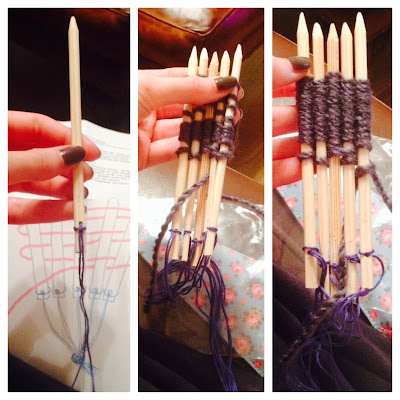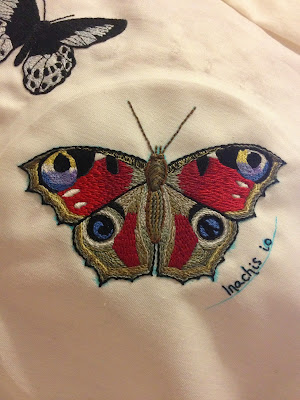This weekend I went to Sandringham Craft, Sculpture and Art Fair. One of the most prestigious craft fairs in the UK, drawing craftsmen, designers and artists from all over the country, this year's fair runs from Friday 9th-Sunday 11th August. It also happens to be just three miles down the road from my house, which is a bonus!
There was so much to see and do upon arriving at the fair
that it was a little overwhelming at first. From ironmongers and wood-turners,
chainsaw carvers, potters, jewellery makers, to glass-blowing, oil-painting
master classes, spinning and weaving classes, (as well as stranger stands such as one selling hand made goats milk beauty products that stank out the entire area with the scent of sour dairy...) the list and array was endless. Given
the state of my fresh graduate overdraft at the moment I had to put a firm
limit on the amount of cash I brought with me… a wise decision, otherwise I
think I’d have been paying to try my hand at just about everything on offer! I like to
think I made financial gains, however, by indulging in the mother of free lunches
provided by the endless samples of cheeses, sausage, jams, pickles, fruit
liqueurs (!), etc in the amazing food tent…. The whole show was great but I’ll
just focus on some of my highlights.

One of the first things I did was attend a 30 minute glass-blowing demonstration by E+M Glass, a husband
and wife duo based on the Welsh-Cheshire border. I had seen such demonstrations on television before, but never in person. I was struck by the massive contrast between the demonstrator, Margaret's, description of the technical difficulties and precariousness of working the glass, yet how effortless and easy she made everything she was doing look. The furnace she was using heated the molten glass to 1100 degrees celsius - hotter than a volcanic eruption. In the process of making a 1920's style fluted perfume bottle, Margaret demonstrated aspects of glass-blowing such as the thumbing method, which involves blowing a small amount of air into the blow-pipe before covering the end of the pipe with the thumb, thereby allowing the trapped air inside to slowly expand due to the heat, in a more controlled manner than lots of blowing alone. Also interesting was being shown how subtle layers of colour were added, by rolling the molten clear

glass in fine granules of coloured glass, that fused and melted onto it in delicate coatings that could later be etched away and texturised in different ways for different effects. The finished bottle's fluted colour design was created with the assistance of Ed, who essentially 'stuck' drizzled strings of different coloured molten glass onto the bottle as it took shape, which were then melted into the bottle and drawn through with a knife to create pattern and movement. The demonstration also included some interesting facts, such as how glass was first discovered by merchant sailors lighting a fire on a beach, that burned so hot that it melted the sand below it. Information on further technical difficulties included the fact that each different colour of glass has different properties concerning its hardness, melting temperature, etc, and hazards regarding the control of temperature. The finished glass pieces can explode if they cool down too quickly, so Ed and Margaret place them in a computerised kiln that begins at a temperature of 480 degrees celsius, before gradually becoming cooler over the course of eight hours or so.
My two favourite textile-y highlights of the show were a brilliant stall demonstrating traditional machine-knitting techniques, and a whole tent full of different types of traditional weaving.



Martin Green produces beautiful and delicate knitted shawls and scarves, all made on his collection of original Victorian circular knitting machines- originally invented in order to industrially produce socks- or William Lee-type machines that were first invented in 1589. I just love this type of thing- being able to actually use the very machines and materials of the past to make something that you know is just the same as our ancestors would have possessed. The shawls on display were unbelievably soft and delicate, and I would highly recommend them as a beautiful gift for a new baby. I also found the pricing very reasonable given the beautiful quality, and I was determined to buy something from this stall! The smallest scarf size made on the William Lee machine was £9.95, which I was very tempted by, simply to own such a lovely piece of textile. I decided in the end, however, to go for something that I would actually wear myself - a scarf/snood knitted on the Victorian circular knitting machine. Despite being priced at £4.95 in a bin of 'off-cuts/end bits', it is beautifully soft and delicate, yet still very warm and cosy- certainly not a 'reject' in my eyes!
My other favourite textile element of the show was a tent devoted to weaving techniques. I was really impressed by the possibilities of tapestry weaving, which made some really detailed images as well as modern geometric designs and imaginatively varied textures.


Perhaps the most painful part of the day was seeing an entire tapestry-weaving kit on sale for £18.50 that I was sadly unable to afford by that point! It is something I would just love to try, and I got chatting to a woman whose friend runs classes relatively near me, so watch this space... It was definitely for my own good that the stall didn't have a card reader machine, as I would have been very tempted by a peg loom as well, which produces lovely pieces of weaving like the above rugs, and that I was assured is very easy to do.
In the end I had to make do with what I could afford with my final £2.50 of the day - some 'weaving sticks' that are essentially a smaller, hand-held version of peg weaving - I will post an update when I've had a go with them! A final feature of the weaving tent were these magnificently textured Wensleydale sheep fleece rugs, and accompanying live demonstration on a traditional loom.
I've just looked back over all I've written so far and have realised I could probably triple this amount if I carried on going into everything I liked at the show in this way... so I will just be brutal with myself and post a few pictures of my remaining absolute favourites...
These leather moccasins were just so bright and whimsical, and the most incredibly soft leather I think I've ever felt. They were being made in live demonstrations and I'd never seen something like that in person before. They were created in any colour-way desired - and custom-made shoes for £25 these days is a massive bargain!
This In Stitches jewellery was really clever - made using knitting and crochet techniques, but done with jewellery wire instead of textile. You can see the slender metal knitting needles in the picture below, and jewellery wire with beads threaded onto it, that are then knitted into the design. Whilst the design of the jewellery isn't necessarily something I would wear myself in terms of colours and shapes etc, I thought the technique was really cool, and, as ever, would be something I'd love to try if I can get my hands on some of those special knitting needles..!
Chainsaw wood-carving is a big part of the Craft Fair, as it is home to the 'Sandringham Cup', a sought-after award for which the top 12 UK and European wood-carvers compete. My favourite wood-carved items were this absolutely enormous chair, and these oak leaves that I thought could also possibly serve as chairs.


My remaining purchases of the day were this little hanging ornament for my Mum, who has an irrational love of decorative chickens (and the Daisy on it was a bonus), and some fat quarters of fabric from a quilting stall, as I am currently preparing to begin my first quilting project. There were some amazing things on display on the quilting stall, but unfortunately the fabulously crabby 80+ year old woman running it wouldn't allow me to take any pictures, her reason being that I wasn't 'local enough!' She also looked me up and down and informed me wryly that 'quilting isn't for everyone', and let me know that my chosen fabrics didn't match (they weren't supposed to)... but hey-ho, all part of the quirkiness of the day and the world of crafting..! All in all, a great day and I look forward to next year.








































.jpg)









.jpg)
